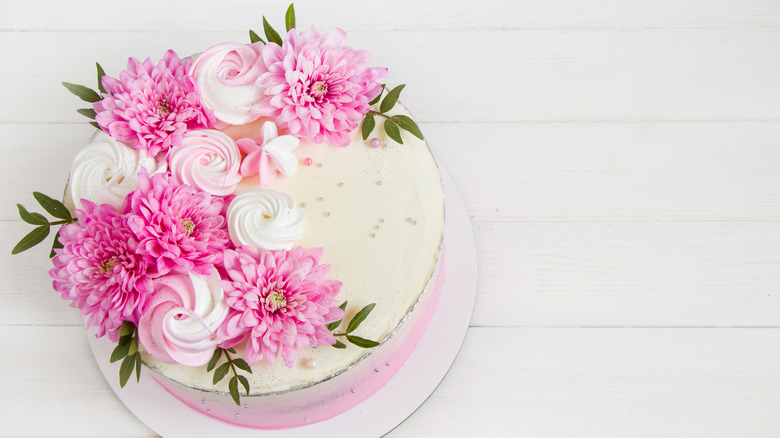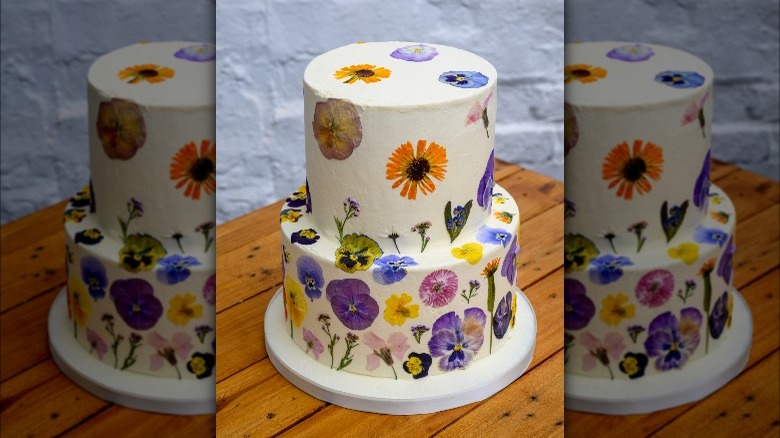Why You Should Be Cautious When Decorating A Cake With Fresh Flowers
If there's one surefire way to turn a homemade cake into a masterpiece, it's edible flowers. From garden parties to birthdays to afternoon teas, a round cake dotted with fresh petals is sure to wow a crowd. (The crowd isn't necessary, either; making a flower cake is a lovely thing to do for your own enjoyment as well.) Those delicate flowers can be a surprisingly versatile garnish. Brooklyn Botanic Garden suggests candying flowers into crystallized gems. They can also be turned into floral syrup or dried and steeped in tea. Laura Braasch, manager of the Dartmouth Organic Farm, recommends drying and pressing your fresh flowers, which adds a compelling textural component and extends shelf life, via King Arthur Baking. Per Food & Wine, you can store fresh edible flowers for later use in the refrigerator in an airtight container lined with paper towels to wick away moisture. When it's time to decorate your cake, Braasch recommends leaving a short nugget of the stem attached to the flower's base to help the flower stay positioned on the cake without getting weighed down by frosting.
But, as charming as fresh flowers may be on a cake, they aren't all as harmless as they look. Here's why you should be cautious when decorating a cake with fresh flowers and what to look for to do it successfully.
Pay attention to sourcing and species
To keep yourself and your guests safe as you satisfy your sweet tooth with a fancy floral treat, choose edible flowers and buy unsprayed blooms from reputable sources. Say yes to violets, pansies, marigolds, and peonies. Hydrangeas, hyacinths, and daffodils might look beautiful in a garden, but they don't belong on a cake platter. Registered dietician Toby Amidor advises against getting non-edible flowers anywhere near your food. Even using them as a garnish and discarding them can be risky. "If you use a toxic flower and it touches the surface of the cake, remnants from the flower will be on the cake and can potentially make you sick," Amidor explains via Food Network.
Preparation and sourcing are crucial aspects, too. Per Brooklyn Botanic Garden, be sure to wash and dry your flowers before getting them anywhere near your food — and only eat the petals. The outer leaves and inner reproductive parts of flowers have an unpleasant bitter taste. Also, look for flowers grown without pesticides. A bouquet from the farmer's market is probably a good move, says Braasch, but you should take a pass on a bouquet from the grocery store. Luckily, there's a wide array of edible options ready for the pickings. (Literally.) When they're grown organically, dandelions, chrysanthemums, calendulas, roses, lavender, jasmine, honeysuckles, elderflowers, hibiscuses, and begonias, among others, are all safe to eat and ready to transform your next cake into a work of art.

